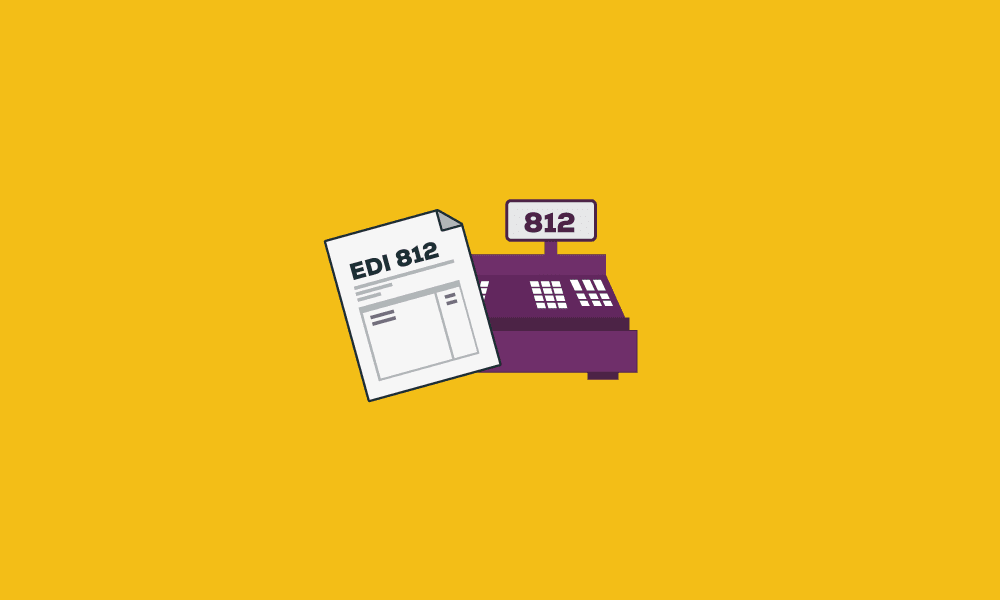EDI 812: Debit/Credit Adjustment transaction explained
At the risk of sounding like a “pobody’s nerfect” t-shirt, things go wrong from time to time. Accidents can and do happen. Processes break when humans enter the equation and something happened to your order between the PO and the moment it arrived at your location.
Sound familiar?
The difference is when it happens to you personally, as a customer, you just ship your item back for a refund or take it back to the store for an exchange. But what do you do when it happens in your business, at the retail-to-wholesale level?
The reality is that even in the slickest, best run, most well-tuned supply chain, things go wrong. Items get damaged or lost in transit, sales surges and manufacturing dips cause backorders. Credits, credit adjustments, billbacks, rebates and allowances are just a necessary party of the retail game.
EDI has grown and evolved to enable businesses to exchange sales and ordering information automatically, which means we can make pricing adjustments quickly and without a lot of fuss.
What is EDI 812 Debit/Credit Adjustment?
An EDI 812 Debit/Credit Adjustment is a business document that communicates an adjustment to the costs for products or services between retailers or grocers and their vendors, suppliers and wholesalers. It’s the electronic version of a paper credit or debit memo which would normally be sent in the case of damage to a shipment or too much of a product being sent.
The EDI 812 Credit/Debit Adjustment is often made in cases where:
- Items were defective, damaged, or spoiled.
- Products were not received.
- The wrong products were sent.
- An adjustment for manufacturer rebates or retailer allowances is due.
- The number of items delivered were more or less than were ordered.
- There was a pricing error on the original PO or invoice.
- Items are being returned, such as consumer returns.
An EDI 812 document may include the following:
- The original PO or transaction number.
- The amount of the adjustment.
- The items being adjusted
- The reason for the adjustment.
The 812 is used for reporting adjustments to payments to another party (in this case, typically payments from the retailer to the supplier/vendor) or used to exchange supplier created credit memos (though some use the 810 for this). Those adjustments can be pricing discrepancies on an invoice but can also include shortages or damages for products associated with an invoice. In addition, there may be rebates, volume or other allowances that the retailer or supplier supports that is not associated with a particular invoice.
How is EDI 812 Credit/Debit Adjustment used?
Sellers will often use the 812 to notify a customer about pricing increases or decreases related to a previous purchase order (EDI 850) or invoice (EDI 810). This is generally to communicate authorization for the retail customer. For instance, to make a deduction from future payments that may reference adjustments they approved (against an invoice previously issued) or for returns, rebates or allowances. Adjustments can be made by deleting items from a single invoice, or it can be a standalone adjustment.
Buyers can also send an 812 Credit/Debit Adjustment to request an adjustment from a supplier, in the case of products becoming damaged in transit, or the wrong items were sent from the warehouse (which wouldn’t happen as much if you embraced the EDI system to its fullest).
To learn more about using an EDI 812 or any other EDI documentation, please visit the SPS Commerce website. You can learn more about EDI, get a free demonstration, or speak to one of our EDI specialists.

Free Full-Service EDI Guide
Discover how EDI can assist with solving some of your most pressing business problems with this free resource.
GET FREE GUIDE- EDI compliance brings value for buying organizations - August 15, 2023
- What is Advanced Shipping Notice (ASN) in Shipping? - March 28, 2023
- Test new products online before stocking at retail stores - February 2, 2023


RELATED POSTS
4 strategies to conquer lean inventor...
The power of accurate product attributes
Solve the item data dilemma